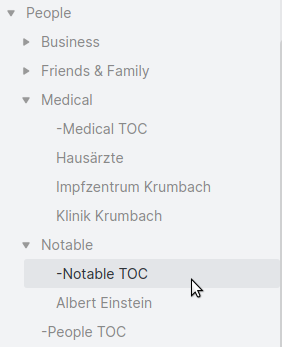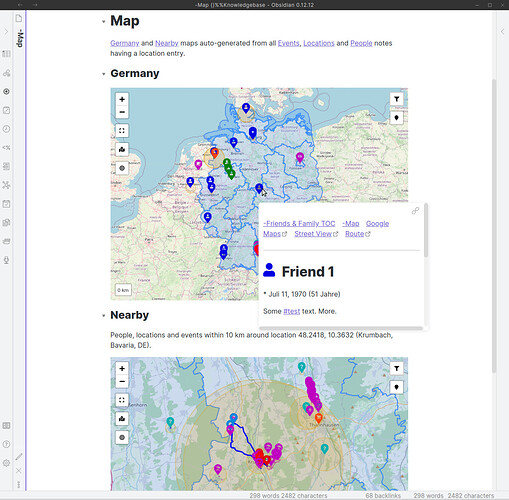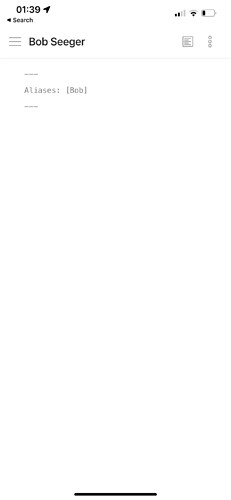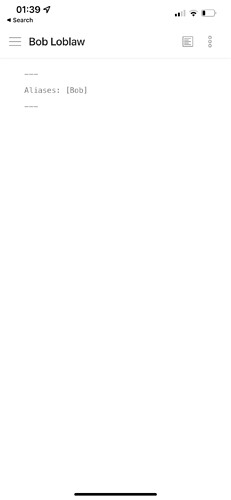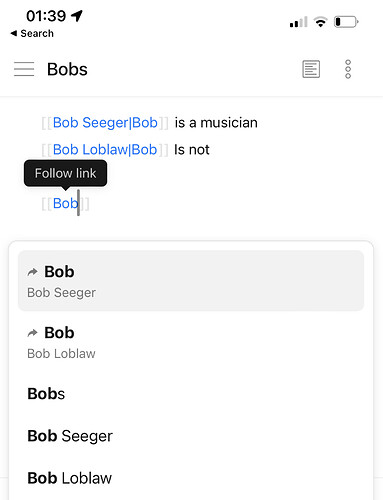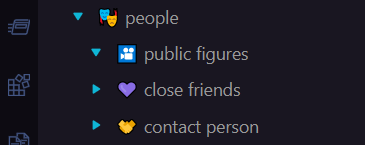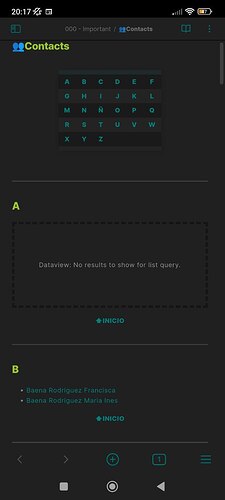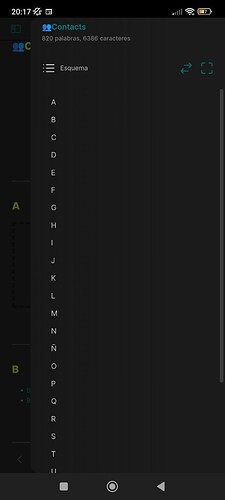I am using Obsidian heavily as a journal and want to keep track of the people I meet and the friends I make during my life. People I know well and are a part if my life get their own pages, while casual acquaintances just stay links to unexciting files.
Since I can’t tell beforehand who actually becomes a friend later on, I create links for people from the very first meeting on, even if I might actually know that we probably never meet again. I found that by looking at my journal graph view, seeing all those names of people there, sparks a lot of memories, even if I just met someone once (In general I think I often remember experiences I had with others better, than the ones I had alone). And if the noise is too loud, I toggle off the unexciting files in the graph and just see the important people in my life.
However, linking to everyone you get to know during your life leads to problems in Obsidian, since first names are usually not unique (and right now I am actually living in a country which has a very small variety of first names). Of course, I could write people’s surnames for the ones I know well, but I would like to avoid that for privacy reasons, just in case somebody gets access to my vault somehow.
So for now, this is my workflow for linking to people:
- I am using a specific identifier
@for new people/acquaintances and a number as a unique identifier for them. - As soon as someone becomes closer to me, I remove the
@and also change the identifier number to a new identifier number, if I already have a close person with this name in my life.
Here is an example of this:
-
On some party, I’m getting to know John. I write about him in my journal, and he gets the link
[[@John 1]]. He and I actually never meet again. -
Weeks later, I’ll meet another John. Since I’ve already linked to a
[[@John 1]], the new one becomes[[@John 2]]. I will mention[[@John 2]]maybe once or twice later on in my journal but eventual, we will not meet anymore. -
Months later, I meet another John,
[[@John 3]].[[@John 3]]and I often meet and become good friends. He gets a page in Obsidian and I change his file name to[[John]] -
Years later, I meet a different John. He gets the link
[[@John 3]](which is now available again and is the next identifier after[[@John 1]]and[[@John 2]]who are still as links in the database).[[@John 3]]and I don’t become friends. -
Later in the future, I’ll meet another John again. He gets the link
[[@John 4]]. We become friends. He gets a page in Obsidian and, since he is the second John I became friends with, I change his file name to[[John 2]].
Since Obsidian shows you which links you’ve created already, you can easily apply the identifier numbers without mixing things up (unless you forgot that you have met someone before in your life already and the other person forgot as well  ). It is not a perfect system, but it’s the most frictionless workflow I came up with and hopefully future-proof.
). It is not a perfect system, but it’s the most frictionless workflow I came up with and hopefully future-proof.
What systems do you use to manage the people in your life?
